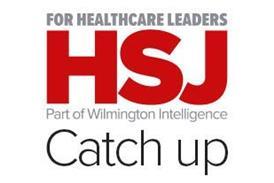NHS 111 is likely to generate inappropriate referrals for a “considerable period of time”, a champion of the new non-emergency telephone number has told HSJ.
With less than four months to go until the new non-emergency number is due to go live across England, areas that have already introduced the system are seeing an increase in demand on emergency services.
Simon Featherstone, chief executive of North East Ambulance Service Foundation Trust which led on the first pilot, said this was to be expected while the system developed new services.
“NHS 111 is a long term journey… there is going to be a lot of inappropriate referrals for a considerable period of time until the rest of the system, particularly services we need to develop outside of hospital, are ready to accept patients…The whole system needs to be built around this.”
The issue is explored in more detail in this week’s HSJ Briefing, analysing the rollout of NHS 111.
The North East Ambulance Service worked with the Department of Health on the development of NHS Pathways, software that can used by non-clinical staff to conduct a detailed triage of callers. It uses a directory of services, populated by local commissioners, to identify the most appropriate service from A&E to self care.
By collecting data on where gaps in service provision exists through Pathways, Mr Featherstone expects NHS 111 to allow the decommissioning of some hospital services as alternatives are set up in the community.
However, John Horrocks, chief executive of Urgent Health UK which represents social enterprise out-of-hours providers, said in many places the directory of services was not being treated with sufficient importance.
“It’s the responsibility of commissioners to maintain the directory of services; the problem is they’re all over the place due to the reforms,” he said. “In a lot of areas the directory feels like it’s falling through the cracks a bit and is often treated as an administrative task.”
So far 42 out of 44 contracts have been awarded. There are currently only 10 areas of the country live and reporting into the DH minimum data set.
NHS Direct chief executive Nick Chapman told HSJ the switchover is “much more of a big bang than we would have liked”.
He said: “Any slippage of mobilisation would give rise to problems. We are being asked to provide contingency support in the event of problems; we’re planning for the worst but hoping for the best.”

























5 Readers' comments